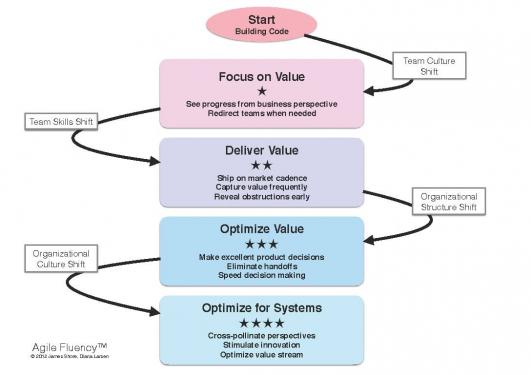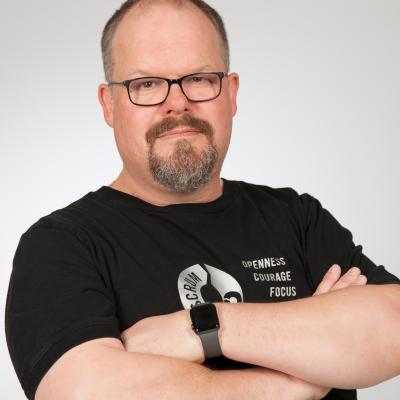Agile Fluency™ for Embedded Development
embedded meets Agile 2016 Conference Talk

So many buzzwords in a single headline. An experiment, a conference, a workshop. What is this all about? Agile Fluency™ is an approach created by Diana Larsen and James Shore, to support agile teams in the assessment and improvement of their own skills and abilities. You can compare Agile Fluency to language learning. There are different levels of fluency or mastery of a foreign language. And I do not need to be absolutely fluid and confident for every purpose. I need a small vocabulary and can mostly forget about grammar to go shopping on vacation. I surely need to master the subtleties of a foreigen language to get through contract negotiations. It does not make sense to invest in a high level language certificate, if a simple course at my next community center can establish my required community level. The keywords here are assessment, value and path. An Agile Fluency™ Coach visits the agile team, walks them through a self-assessment based on empirical observations, and helps the team to determine their development goals and approaches.
Agile Fluency™ levels range from ★ to ★★★★:
★ Focus on Value
- See progress from business perspective
- Redirect teams when needed
★★ Deliver Value
- Ship on market cadence
- Capture value frequently
- Reveal obstructions early
★★★ Optimize Value
- Make excellent product decisions
- Eliminate handoffs
- Speed decision making
★★★★ Optimize for Systems
- Cross-pollinate perspectives
- Stimulate innovation
- Optimize value stream
Agile Fluency™ was developed with software teams in mind. We have been discussing the application of agile principles to product development beyond software at DasScrumTeam for a while. How could Agile Fluency™ work for embedded systems with more or less small software portions? Is it possible to transfer agile principles and Agile Fluency™ concepts to development projects, that are mostly driven by V-Model ?
There are several examples that demonstrate that there are many opportunities and options. We reported about the company soplar, that applies agile principles in self-organizing teams for machine construction. We have made several experiences with clients from automotive, pharmaceutical technology, mobile telephony and other embedded fields.
I had the change to explore the Agile Fluency™ concepts and their applicability for embedded development with a small group at the previous embedded meets agile conference. The concepts fits well to the ideas behind the LeSS Feature Team Adoption Map. The latter illustrates the dependency between Fluency, product scope and the cross-functional team's skillset nicely.
We will cooperate in future trainings and workshops with Agile Fluency™ expert, coach and facilitator Steve Holyer on Agile Fluency™, the application of agile frameworks for products beyond software and the combination of both.

About the author
Andreas Schliep
Andreas Schliep is a founding member and executive partner of DasScrumTeam. He is a Scrum coach and trainer. He studied at the technical university of Bremerhaven, and worked as a software developer, project manager, team lead and group lead. Andreas has worked with Scrum since 2003. He became a full-time Scrummer in 2006.
Since then, he has helped to introduce and improve Scrum and agile practices in numerous companies all over the world. His favorite topics are quality management and scaling.
- Experienced ScrumMaster, Product Owner, Coach and Trainer
- Introduced Scrum at WEB.DE
- Coaching of internationally distributed teams
- Transition from RUP to Scrum at UOL Brazil
- Scrum Trainings and Coaching in Germany, Switzerland and Austria
Always up to date with the DasScrumTeam newsletter.
The best in terms of Scrum. Once a month. Every month.
